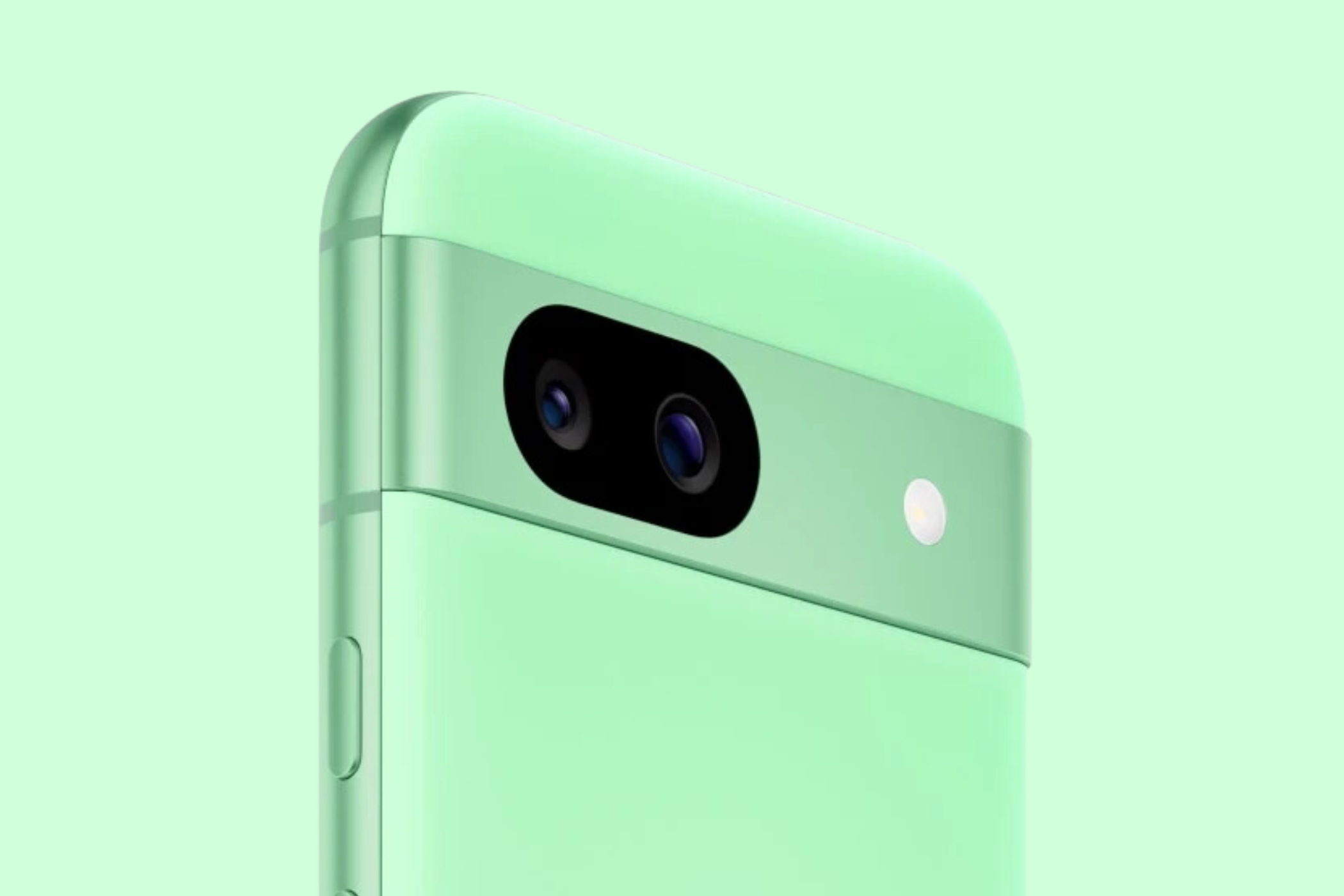Pixel 8a Vs. Pixel 7a: Is The A-Series Upgrade Worth The Premium?
Google's latest A-series smartphone, the Pixel 8a, comes with several upgrades over the Pixel 7a. A smoother screen, Tensor G3 SoC, and seven years of Android updates might compel you to get the Pixel 8a right away, but is the mid-year update worth the premium over the Pixel 7a? Let's find out.
Pixel 8a Features Rounded Corners (and New Colors)
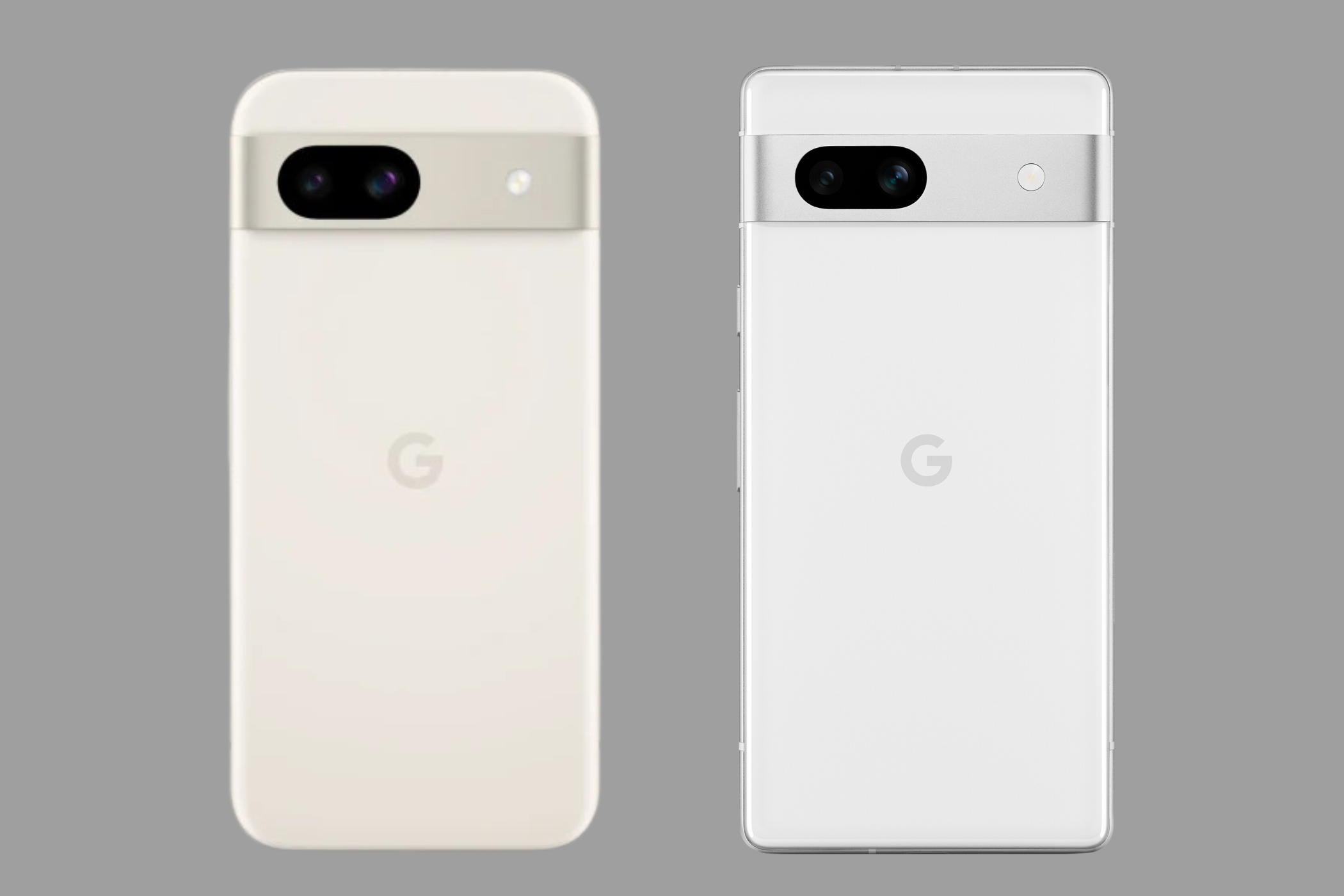 Pixel 8a / Pixel 7a
Pixel 8a / Pixel 7a While the Pixel 8a's dimensions are similar to those of its predecessor, it weighs 188g, which makes it 5.5g lighter. Unlike its boxy predecessor, the Pixel 8a features rounded corners and curved edges, which make the phone look more elegant. In terms of functionality, the design makes the phone easier to hold, too. If you're familiar with the way the Pixel 8a looks, that's because the smartphone is based on Google's 2023 flagship, the Pixel 8.
On the back, the Pixel 8a features the iconic camera visor (with a pill-shaped cutout for the cameras). Further, the matte-textured back on the Pixel 8a feels more premium than the glossy polycarbonate back panel on the Pixel 7a. Apart from this, both phones share the centrally located punch-hole display and the position of buttons/ports.
The Pixel 8a is available in two new colors: Aloe and Bay. While the former has a bright green hue, the latter resembles the Bay Blue finish of the Pixel 8 Pro. Besides, you can also get the smartphone in Obsidian (dark gray) and Porcelain (off-white) shades, similar to Pixel 7a's Charcoal and Snow variants. Unfortunately, Google has dropped the Coral finish it introduced with the Pixel 7a.
Both phones share an IP67 water and dust resistance rating and Gorilla Glass 3 protection for the screen. Moreover, the Pixel 8a has an elegant design, is easier to hold, and won't get fingerprints on the back panel as frequently.
Pixel 8a's Screen Gets a Much-Awaited Upgrade
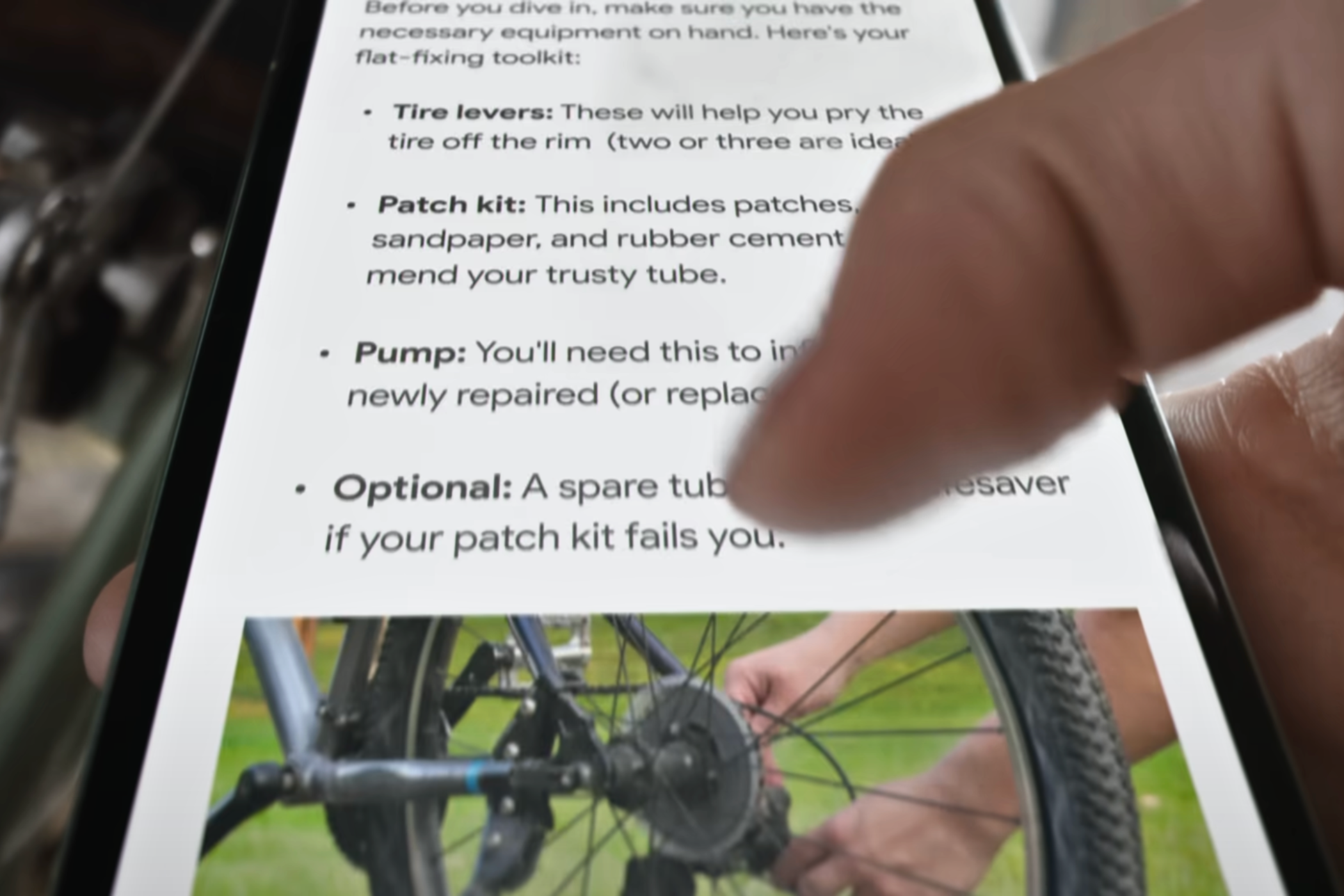
Even though the Pixel 8a has the same 6.1-inch screen size and FHD resolution as the Pixel 7a, Google has upgraded the refresh rate and the peak brightness. So, the latest A-series smartphone now supports a 120Hz refresh rate (non-variable), a significant improvement over the 90Hz refresh rate of its predecessor.
Further, with its Actua display, the Pixel 8a can shine as bright as 1,400 nits while viewing HDR content, which is about 40% higher than the Pixel 7a. If you use your phone to consume digital content, such as web shows, movies, HDR videos, etc., you'll like how the Pixel 8a feels brighter and more vibrant. Together, the higher refresh rate and a brighter screen are much-needed improvements, taking the new A-series iteration to the flagship tier.
Google's Tensor G3 Unlocks New AI Features
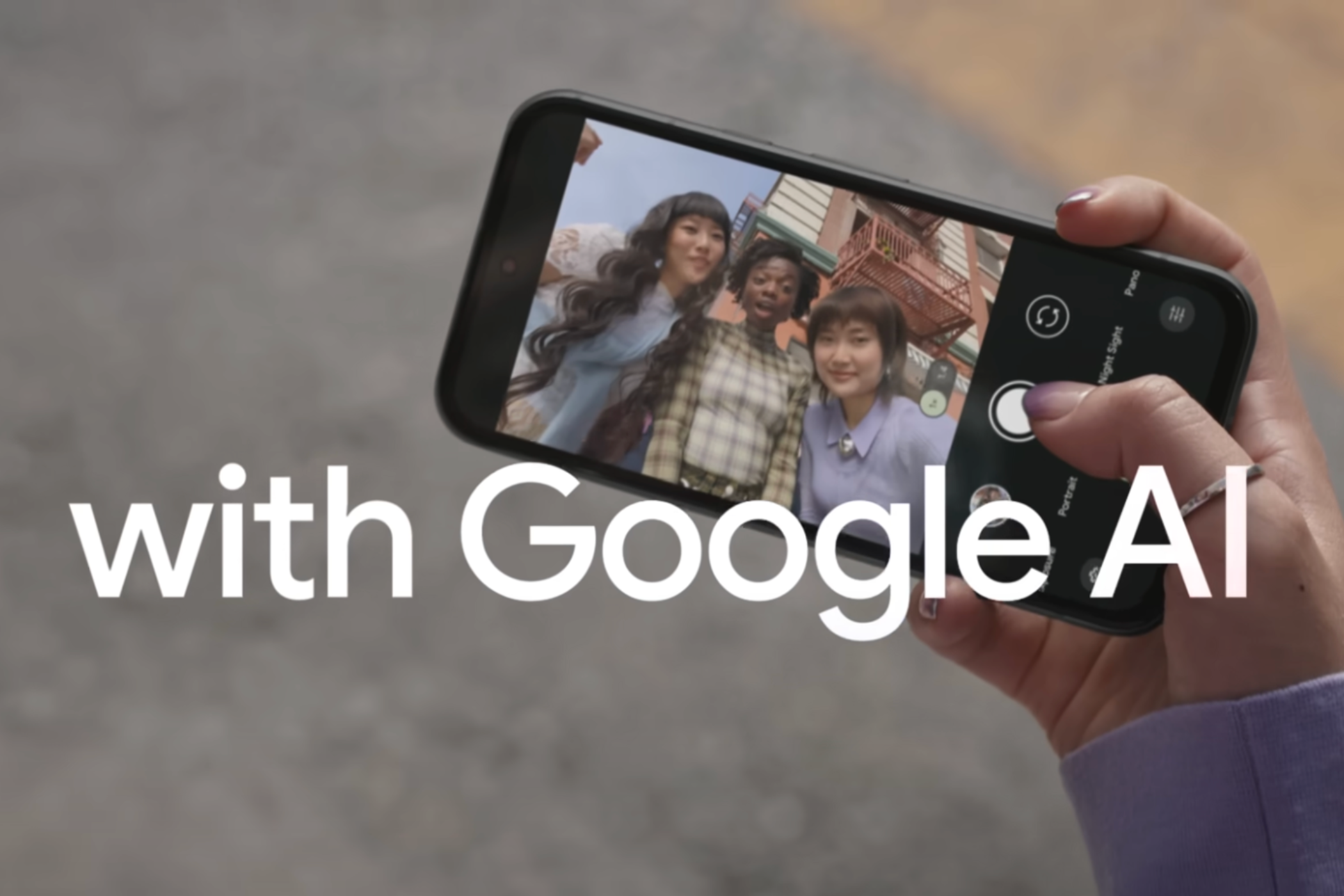
Under the hood, the Pixel 8a features the Google Tensor G3, the same processor that powers the Pixel 8. Yes, the processor can handle heavier workflows better than the Tensor G2 on the Pixel 7a, but there's more to it. First, the processor is paired with faster LPDDR5X RAM. Second, Google provides a new 256GB storage variant for those who don't want to opt for the baseline handset with 128GB of storage (and quite frankly, only those with light usage should).
Thanks to G3's AI processing capabilities, the Pixel 8a gets some of the most advanced image and audio editing tools, including Circle to Search, Best Take, Magic Editor, and Audio Magic Eraser. We're discussing these features here as they have more to do with the Tensor G3's image signal processor than the camera hardware (which we'll talk about in a bit). Elsewhere, the chipset is based on a 4nm fabrication process, which makes it more efficient than Tensor G2 (5nm).
Pixel 8a Features the Same Cameras as the Pixel 7a
"If it ain't broke, don't fix it." That's the best phrase that describes the Pixel 8a's cameras. If there's one aspect where the Pixel 7a outperformed all its competitors, it is the phone's cameras. In Marques Brownlee's blind smartphone camera test, Google's Pixel 7a bested some of the most expensive handsets on the market, including the Pixel 8 Pro, iPhone 15 Pro, Vivo X90 Pro, and more.
Since the Pixel 8a features the same camera sensor (and computational photography tricks) and the improved image signal processor of the Tensor G3, it should click even better photos and videos. On paper, at least, the phone features a 64MP (f/1.9, OIS-enabled) primary sensor and a 13MP (f/2.2) ultrawide shooter. With these cameras, users can shoot 4K videos at 60 fps, which is true for the Pixel 7a as well.
As discussed earlier, the Pixel 8a gets a few AI-based tricks up its sleeve, including Best Take, Magic Editor, and Audio Magic Eraser. Beyond these, the Pixel 8a shares many of its camera-centric features with the Pixel 7a, such as Photo Unblur, Real Tone, Portrait Light, and Super Res Zoom (up to 8x).
Both Phones Offer Similar Battery Life
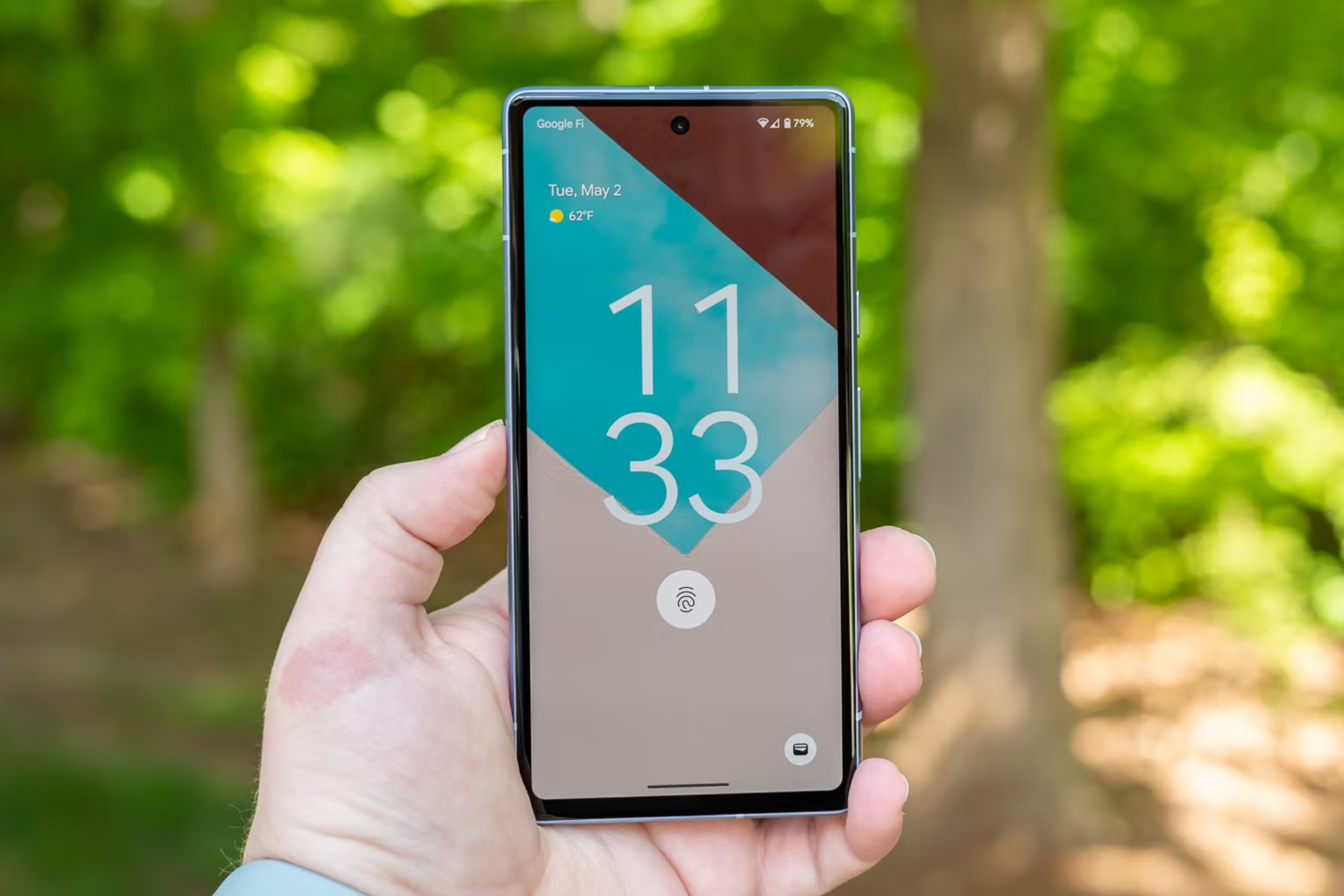
The Google Pixel 8a ships with a slightly bigger battery (4,492 mAh) than the Pixel 7a (4,385 mAh). However, given that the new smartphone sports a more powerful chipset and a 120Hz Actua screen, it's unlikely that the Pixel 8a will last longer. This is why Google claims a similar battery life for both phones, rating them to last just over 24 hours in the regular mode and up to 72 hours with the Extreme Battery Saver mode.
In addition to similar batteries, both phones support the same charging rates, i.e., up to 18 watts. You can also charge them via Qi-certified wireless chargers, but they'll draw power at a ridiculously low 7.5W. The total battery capacity aside, we feel the charging speeds are a big miss for the Pixel 8a. Nonetheless, there are no downgrades either.
Pixel 8a Will Get Seven Years of Android Updates
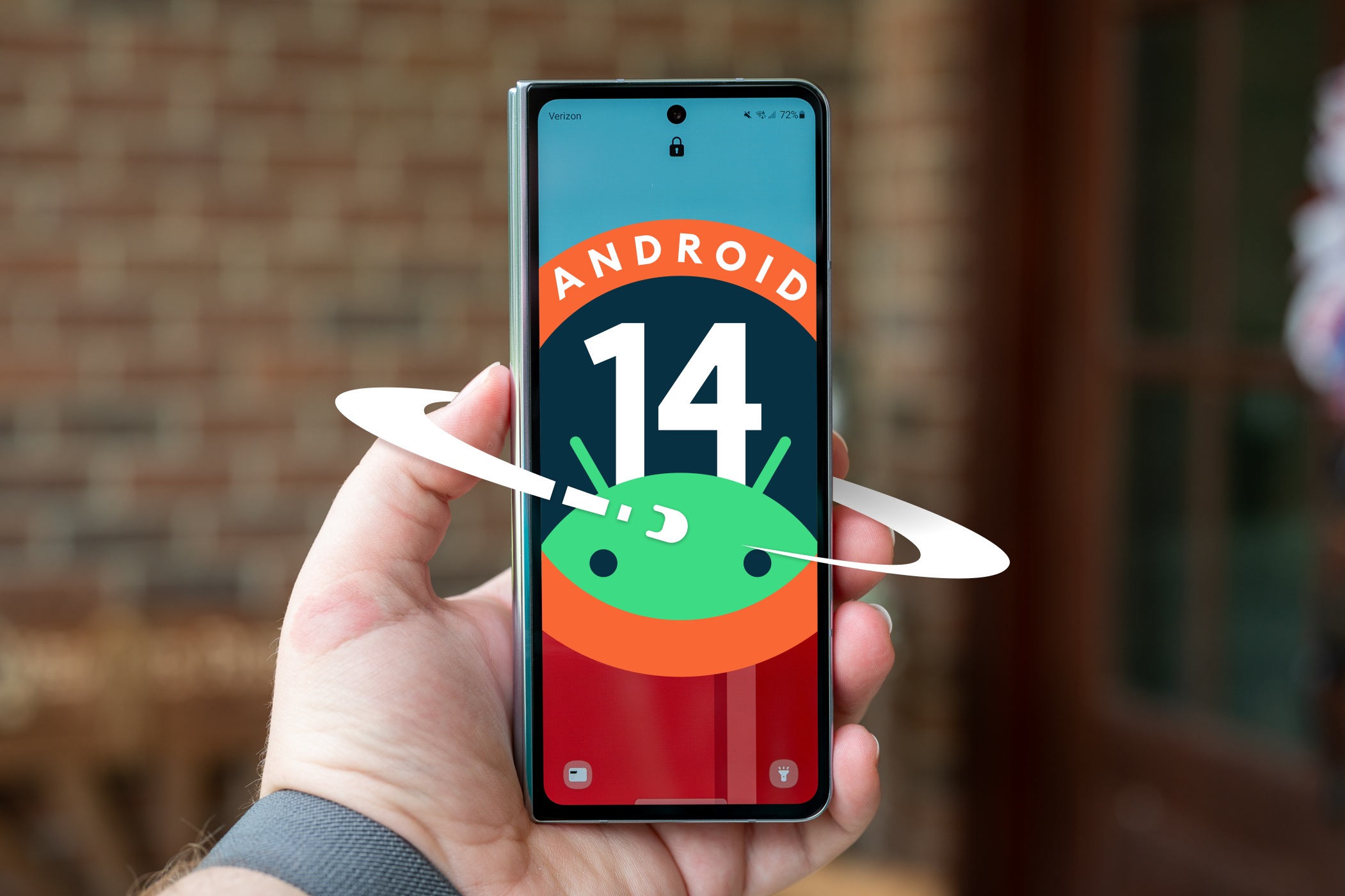
Another reason to spend more on the Pixel 8a is Google's promise of providing seven years of Android updates. During this time, the phone will receive several security updates and quarterly Pixel drops, which will add new features. Hence, if you purchase the smartphone in 2024, going by Google's promise, it should receive software updates till 2031, which is pretty terrific.
On the other hand, the Pixel 7a will get guaranteed Android version updates until at least May 2026, with security updates until May 2028. For now, both phones run Google's Pixel UI based on Android 14 and will get a timely update to Android 15 later this year. Clearly, the Pixel 8a is the way to go if you're looking to get the most use for your money.
Pixel 8a vs. Pixel 7a: An Enthusiasts Upgrade
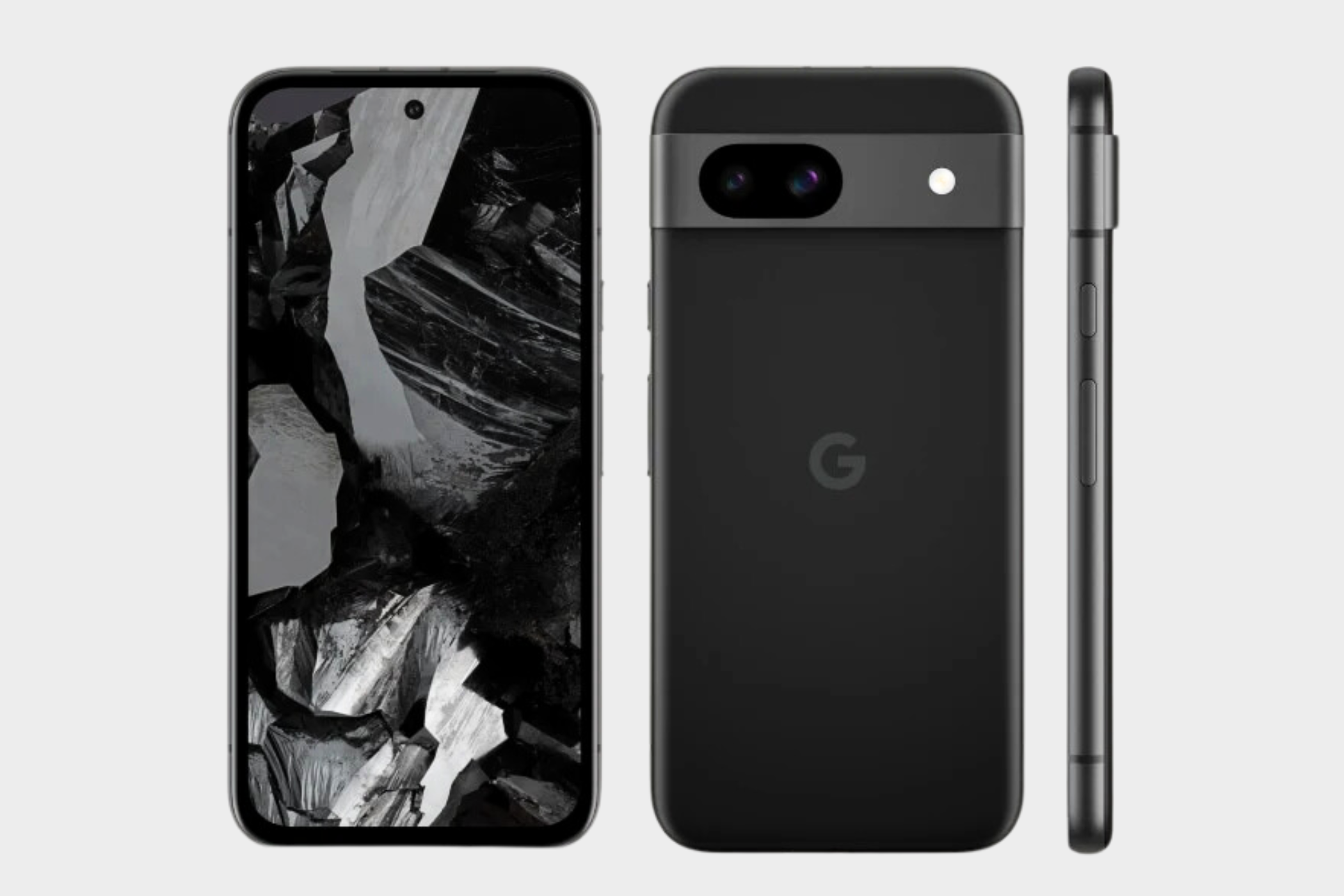
Finally, we conclude this comparison, and if you've made it so far, you're really into the Pixel series. Speaking of which, I would like to call the Pixel 8a an enthusiast's upgrade, especially if you own a Pixel 7a. The 2023 A-series smartphone offers most of the features that Google floats with the newest model. Given the guaranteed software support until 2026, you can keep using the Pixel 7a for another year or so before you absolutely need to upgrade.
However, if you're using a three or four-year-old smartphone, like the Pixel 4, Pixel 5, or the Galaxy S20, the Pixel 8a could be the right choice for you. The phone offers all the latest AI-based features of the Pixel 8 series, along with a contemporary design and robust software support.
If you're trying to decide between these smartphones, go with the one that fits your budget. I've seen the Pixel 7a retail for as low as $349 for an unlocked device and $249 with carrier activation. If you're getting the Pixel 7a in a similar price range, go for it. However, if budget is not a constraint, and you absolutely want to taste the latest AI-based features, you can't make a mistake with the Pixel 8a. It costs $499 for the base 128GB model and $559 for the model with 256GB storage.
-
 5 Best Second Monitors for iMac M3 in 2024The iMac M3 is a powerhouse of a desktop, but even the mightiest machine can benefit from a trusty sidekick. The 24-inch 4.5K monitor offers excellent...Software tutorial Published on 2024-11-06
5 Best Second Monitors for iMac M3 in 2024The iMac M3 is a powerhouse of a desktop, but even the mightiest machine can benefit from a trusty sidekick. The 24-inch 4.5K monitor offers excellent...Software tutorial Published on 2024-11-06 -
 7 Reasons Why Your iPhone\'s Touchscreen Has Stopped RespondingAn iPhone's touchscreen can stop responding for several reasons. These range from simple cleaning problems to complex software glitches. Here'...Software tutorial Published on 2024-11-06
7 Reasons Why Your iPhone\'s Touchscreen Has Stopped RespondingAn iPhone's touchscreen can stop responding for several reasons. These range from simple cleaning problems to complex software glitches. Here'...Software tutorial Published on 2024-11-06 -
 Google Play Pass Is Great, Except for This One ThingIf you’ve ever opened up the Google Play Store, chances are it has tried to push you into subscribing to Google Play Pass. And maybe you’ve been temp...Software tutorial Published on 2024-11-06
Google Play Pass Is Great, Except for This One ThingIf you’ve ever opened up the Google Play Store, chances are it has tried to push you into subscribing to Google Play Pass. And maybe you’ve been temp...Software tutorial Published on 2024-11-06 -
 What Is Windows Web Experience Pack? How to Update It?What is Windows Web Experience Pack on Windows 11/10? How to find the Windows Web Experience Pack version? How to download/update/uninstall Windows We...Software tutorial Published on 2024-11-06
What Is Windows Web Experience Pack? How to Update It?What is Windows Web Experience Pack on Windows 11/10? How to find the Windows Web Experience Pack version? How to download/update/uninstall Windows We...Software tutorial Published on 2024-11-06 -
 2 Ways to Roll Windows 10 Pro Back to Windows 10 SFrom my perspective, it is easy and quick for you to upgrade from Windows 10 S device to Windows 10 Pro. If you want to try to roll back it. Here are ...Software tutorial Published on 2024-11-06
2 Ways to Roll Windows 10 Pro Back to Windows 10 SFrom my perspective, it is easy and quick for you to upgrade from Windows 10 S device to Windows 10 Pro. If you want to try to roll back it. Here are ...Software tutorial Published on 2024-11-06 -
 How to Add a Shutdown Desktop Shortcut in Windows 11Shutting down your computer is a routine task, but navigating through the Start menu each time can be cumbersome. If you're looking for a quicker ...Software tutorial Published on 2024-11-06
How to Add a Shutdown Desktop Shortcut in Windows 11Shutting down your computer is a routine task, but navigating through the Start menu each time can be cumbersome. If you're looking for a quicker ...Software tutorial Published on 2024-11-06 -
 4 Fixes When the Windows 11 Volume Slider Is Stuck on the ScreenBasic Fixes: Restart the computer: A reboot forces all services and processes to shut down, fixing glitches and temporary bugs. Run a malware scan: M...Software tutorial Published on 2024-11-06
4 Fixes When the Windows 11 Volume Slider Is Stuck on the ScreenBasic Fixes: Restart the computer: A reboot forces all services and processes to shut down, fixing glitches and temporary bugs. Run a malware scan: M...Software tutorial Published on 2024-11-06 -
 How to Fix “This Setting Has Been Configured by a Profile” on MacBefore moving on with the fixes, we suggest installing the latest software version on your Mac. Open Settings > General > Software Update and then ins...Software tutorial Published on 2024-11-06
How to Fix “This Setting Has Been Configured by a Profile” on MacBefore moving on with the fixes, we suggest installing the latest software version on your Mac. Open Settings > General > Software Update and then ins...Software tutorial Published on 2024-11-06 -
 New Laptop but No WiFi? – How to Fix It FastRight-click on your WiFi adapter and select Disable device. Wait a few seconds, then right-click on your WiFi adapter again and select Enable device....Software tutorial Published on 2024-11-06
New Laptop but No WiFi? – How to Fix It FastRight-click on your WiFi adapter and select Disable device. Wait a few seconds, then right-click on your WiFi adapter again and select Enable device....Software tutorial Published on 2024-11-06 -
 4 Fixes for Macbook Not Outputting in High Refresh Rate to External MonitorBasic Fixes Restart your Mac: Restarting your Mac often fixes things by refreshing the configuration, solving software glitches, and reinitializing po...Software tutorial Published on 2024-11-06
4 Fixes for Macbook Not Outputting in High Refresh Rate to External MonitorBasic Fixes Restart your Mac: Restarting your Mac often fixes things by refreshing the configuration, solving software glitches, and reinitializing po...Software tutorial Published on 2024-11-06 -
 Can\'t Upgrade to Windows 11? Microsoft\'s Advice Is to \"Buy a New PC\"If you're currently using any version of Windows other than Windows 11, then your system is either already unsupported (Windows XP, Vista, 7, 8.1)...Software tutorial Published on 2024-11-06
Can\'t Upgrade to Windows 11? Microsoft\'s Advice Is to \"Buy a New PC\"If you're currently using any version of Windows other than Windows 11, then your system is either already unsupported (Windows XP, Vista, 7, 8.1)...Software tutorial Published on 2024-11-06 -
 How to Fix Birthdays Not Showing up in iPhone CalendarBasic Fixes Force quit and relaunch the app: This will give the app a fresh start and reload it entirely on your iPhone. Update the Calendar app: You ...Software tutorial Published on 2024-11-06
How to Fix Birthdays Not Showing up in iPhone CalendarBasic Fixes Force quit and relaunch the app: This will give the app a fresh start and reload it entirely on your iPhone. Update the Calendar app: You ...Software tutorial Published on 2024-11-06 -
 Top 4 Ways to Fix Android Phone Not Showing Up on MacFix 2: Enable File Sharing on Android Phone By default, when you connect an Android phone to a PC or Mac, the system starts charging the phone. ...Software tutorial Published on 2024-11-06
Top 4 Ways to Fix Android Phone Not Showing Up on MacFix 2: Enable File Sharing on Android Phone By default, when you connect an Android phone to a PC or Mac, the system starts charging the phone. ...Software tutorial Published on 2024-11-06 -
 Warhammer 40000: Space Marine 2 Low FPS/Lagging/StutteringSince Warhammer 40000: Space Marine 2 was released, many players reported that they encountered the “Warhammer 40000: Space Marine 2 low FPS/lag/stutt...Software tutorial Published on 2024-11-06
Warhammer 40000: Space Marine 2 Low FPS/Lagging/StutteringSince Warhammer 40000: Space Marine 2 was released, many players reported that they encountered the “Warhammer 40000: Space Marine 2 low FPS/lag/stutt...Software tutorial Published on 2024-11-06 -
 Guide to Fix Enotria: The Last Song Lagging, Stuttering, FreezingEnotria: The Last Song is now available. You can get this game and start your game journey. However, not all players can have satisfactory game experi...Software tutorial Published on 2024-11-06
Guide to Fix Enotria: The Last Song Lagging, Stuttering, FreezingEnotria: The Last Song is now available. You can get this game and start your game journey. However, not all players can have satisfactory game experi...Software tutorial Published on 2024-11-06
Study Chinese
- 1 How do you say "walk" in Chinese? 走路 Chinese pronunciation, 走路 Chinese learning
- 2 How do you say "take a plane" in Chinese? 坐飞机 Chinese pronunciation, 坐飞机 Chinese learning
- 3 How do you say "take a train" in Chinese? 坐火车 Chinese pronunciation, 坐火车 Chinese learning
- 4 How do you say "take a bus" in Chinese? 坐车 Chinese pronunciation, 坐车 Chinese learning
- 5 How to say drive in Chinese? 开车 Chinese pronunciation, 开车 Chinese learning
- 6 How do you say swimming in Chinese? 游泳 Chinese pronunciation, 游泳 Chinese learning
- 7 How do you say ride a bicycle in Chinese? 骑自行车 Chinese pronunciation, 骑自行车 Chinese learning
- 8 How do you say hello in Chinese? 你好Chinese pronunciation, 你好Chinese learning
- 9 How do you say thank you in Chinese? 谢谢Chinese pronunciation, 谢谢Chinese learning
- 10 How to say goodbye in Chinese? 再见Chinese pronunciation, 再见Chinese learning

